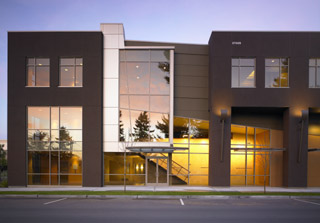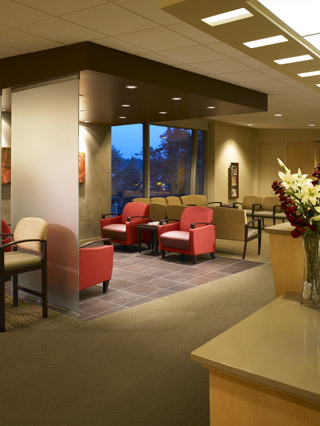
DJC.COM
April 23, 2009
Lean design cuts cost for Covington medical building
Taylor Gregory Broadway Architects

Broadway
|
Developing a medical office building, acute care facility or outpatient treatment center in today’s market includes challenges not seen in previous decades.
Rising costs, declining land availability, tight schedules, demanding local and state jurisdictional issues, budget constraints and the inclusion of complex medical technologies all add to the headache of trying to complete a project successfully. Fast-track construction has become the norm.
Health care design must integrate current trends in patient care and the complexities of facility operation. As a response to this rapidly changing environment, TGB Architects has adopted a “lean design” approach for our projects.
Lean design
Lean design brings together a team of professionals in fields such as health care, architecture, interior design, engineering, construction and development early in the process to plan and execute a successful project.
Information is gathered by the project team on all major issues. Decisions that affect the design are made by the team at the earliest possible time.
Team leaders ensure that all project objectives, information and decisions are shared throughout the team. These practices result in better design decisions, fewer changes late in the project and lower overall project cost.

Photos by Patrick Barta Photography
The 19,000-square-foot Covington Medical Office Building has two floors of outpatient clinics, physician offices and specialty imaging centers. |
A team approach
One recent example that demonstrates this approach is the Covington Medical Office Building, a 19,000-square-foot facility that recently opened in southeast King County.
The facility, developed by Benchmark Development Co. and built by Aldrich & Associates, includes covered parking on the first floor, and two upper floors occupied by outpatient clinics, physician offices and specialty imaging centers. Medical imaging suites and other advanced technologies are located within easy walking distance from the parking garage.
The building is designed to bring together complementary medical services that enable cross referral between practices. In this way patients can seek treatment from other medical providers located in the same building.
Planning for this project started immediately after the contract was awarded. A project team was selected and assembled based on their expertise in medical processes, knowledge of effective patient flow and general office practices. Participants on the team included tenants, engineering, construction, the architect and the building owner’s staff.
Bringing the entire team into planning discussions early ensured that each person understood his or her role, responsibility and accountability to the project time line. The team was also able to gather input from prospective tenants about their special needs and incorporate their ideas into the overall plan. Considerable attention was focused on the initial building design to ensure the facility would support a variety of medical specialists.
When a design change was needed, the team had the authority to immediately incorporate it into the plan. The ability to make these types of changes in the design process (rather than when construction was further along), prevented many minor issues from becoming costly, major disruptions.
Meeting objectives

Waiting rooms at the medical center look out into the lobbies. The building was designed with open spaces that have large windows and natural light. |
The design goal was to create an affordable, attractive, high-quality building that provides a comforting and restful environment for patients.
Interiors incorporate natural materials, soft textures and warm colors that add to the gentle ambiance of the facility and improve each patient’s experience. Waiting rooms are arranged to look out into the lobbies. The conventional building layout of long, narrow hallways and closed doors was changed in favor of open spaces with natural light and large windows.
A successful building development in today’s economy must meet a number of demanding and sometimes competing objectives. Bringing the key players into the design process early made the Covington Medical Office Building a rewarding and satisfying project for everyone involved, saving time, money and headaches.
In the end, this streamlined, team-focused design process created a more cost-effective and successful building design.
Lois Broadway is a principal with Taylor Gregory Broadway Architects, a firm specializing in health care planning and design.
Other Stories:
- Rural hospitals can build wisely if they have a plan
- New health care construction: Always costly, rarely needed
- When electronic systems 'talk,' patients, hospitals benefit
- Hospital project prices falling, but it is still buyer beware
- Architects: Listen and learn from your clients
- Designing to get the most bang for your buck
- New air system could keep patients warmer and healthier
Copyright ©2009 Seattle Daily Journal and DJC.COM.
Comments? Questions? Contact us.